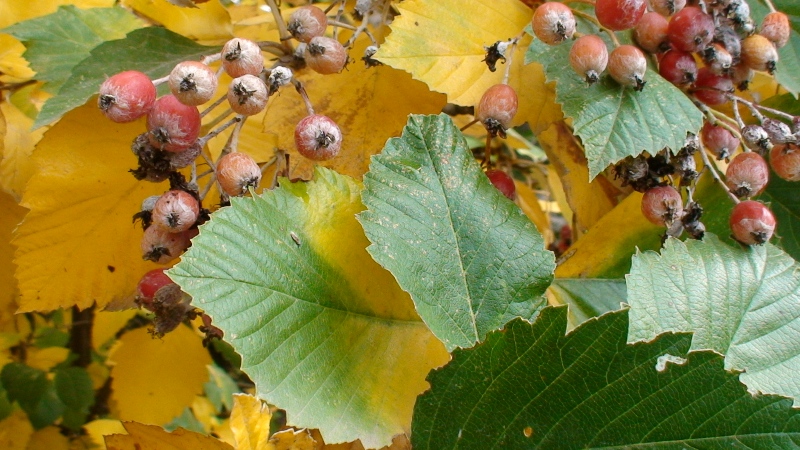Sorbus hajastana: Red Data Book of Armenia

VU B 1 ab (iii) + 2 ab (iii)
Category. Vulnerable species. Relic species the area of distribution of which gradually decreases in Armenia because of worsening of the quality of the habitats and land development. The extent of occurrence is less than 5000 km2, area of occupancy is less than 500 km2. It was included in the first edition of the Red Data Book of Armenia under Category 3: Reducing species. It is not included in the Annexes of CITES and that of the Bern Convention.
Description. Big shrub. Leaves elliptic, entire, cuneate narrowed at apex and base, 9–13 x 5–9 cm, coriaceous, glabrous, shiny, from below densely appressed snow–white pubescent, at margins grandidentate. Fruits dark red, with numerous light lenticels.
Distribution. In Armenia it grows in Sevan (Lake Sevan basin), Aparan (Arayiler) and Gegham (Geghard) floristic regions. EOO is 2580 km2, AOO is 36 km2, the number of locations is 6. Besides Armenia the species grows in the north slope of the Greater Caucasus in Khevsuretia.
Ecological, biological and phytocoenological peculiarities. Grows from middle to sub–alpine belt, at the altitudes of 1600–2400 meters above sea level, on rocky slopes, in forests, among sub–alpine tall grasses on tree–line. Prefers north and north–west expositions. Flowering from May to June, fruiting from July to October.
Limiting factors. Restricted extent of occurrence and area of occupancy, habitats loss/degradation caused by enlargement of recreation zone and the expansion of construction works.
Conservation actions. Part of the population grows in "Sevan" National Park. Necessary: monitoring of the population state.
Suggestions
 The Ministry of Environment sent a letter international partners to draw their attention to the real danger of environmental disasters as a result of Azerbaijan's large-scale aggression towards the territory of Armenia
The Ministry of Environment sent a letter international partners to draw their attention to the real danger of environmental disasters as a result of Azerbaijan's large-scale aggression towards the territory of Armenia
 Vicia pisiformis: Red Data Book of Armenia
Vicia pisiformis: Red Data Book of Armenia
 Vavilovia formosa: Red Data Book of Armenia
Vavilovia formosa: Red Data Book of Armenia
 Trigonella capitata: Red Data Book of Armenia
Trigonella capitata: Red Data Book of Armenia
 Trigonella astroides: Red Data Book of Armenia
Trigonella astroides: Red Data Book of Armenia












